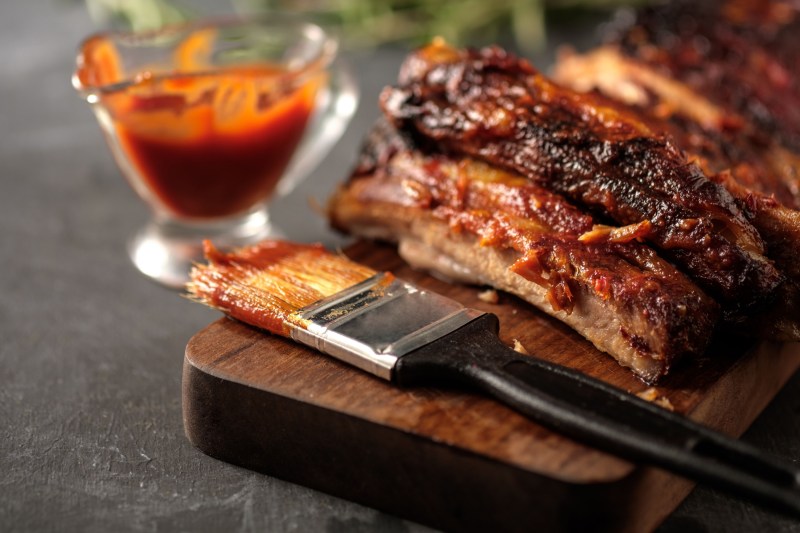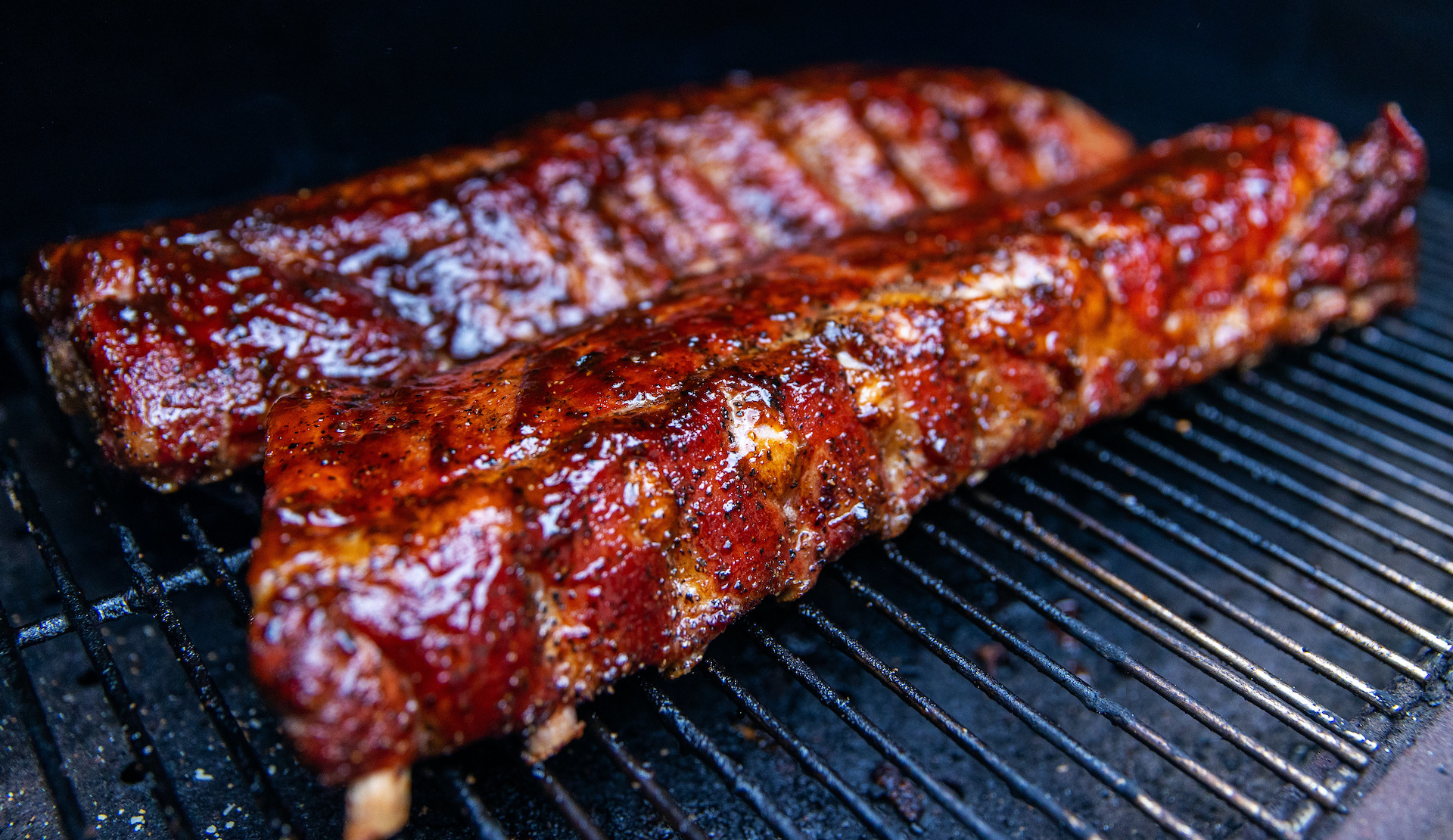
Ah, ribs. The smokey, meaty, sticky, marvelously messy barbecue fare we all look forward to come summertime. Whether you like yours grilled, braised, smoked, roasted, or even sous vide, it’s important to know your ribs and what exactly you’re getting ready to prepare when it comes time to light up that grill. Are you a baby back fan? Perhaps spareribs are more your style? And what’s the best cooking method for each? What’s the difference between a plate short rib and a chuck short rib?
If these are questions you’re asking yourself before it comes time to pick up those tongs, we’ve got you covered.
Pork ribs

When it comes to pork ribs, there are two basic cuts. From these two cuts can come other rib varieties, such as St. Louis-style (which comes from spareribs), but the two general cuts of pork ribs are baby back and sparerib. Both of these styles are unique in cut, flavor, and best cooking style. Whichever of these you most favor, though, there are a few things to keep in mind when shopping for pork ribs.
When selecting pork ribs from your butcher, look for meat that is richly pink in color and completely covers the rib bones. If the bones are too closely visible, the meat is cut too thin and will likely fall off in the cooking process. As with most meats, raw pork shouldn’t have any distinctive smells. Raw pork ribs should smell fresh and sometimes just slightly sweet, never sour or pungent in any way.
Baby back ribs

Baby back ribs are carved from the small section of pork ribs that runs beneath the tenderloin and attaches to the backbone. The meat on these smaller ribs tends to be quite a bit leaner than other pork rib varieties, which are closer to the fattier belly of the pig.
Because of their smaller size, baby backs cook more quickly than spareribs and are delicious when grilled, smoked, or roasted at low temperatures.
Pork spareribs

Sparibs are carved from the lower section of the rib cage, which extends from the cutoff point to the rib tip.
Known for being far fattier—and therefore, arguably, more flavorful—than baby backs, spareribs require low and slow cooking to ensure all of their connective tissues are properly broken down and tenderized. With several hours of love and care, these delicious ribs are exceptional when baked at a low temperature.
Beef ribs

When one takes a minute to consider the massive size of a steer, it shouldn’t come as a surprise to realize that the ribs take up a great deal of space on the animal. Covering about three linear feet from breastbone to backbone and another three to four feet from shoulder to the rib’s end, there’s a lot of territory to cover, and the locations from which these ribs derive make an immense difference in flavor, texture, and best cooking method.
Like pork ribs, beef ribs can be divided into two basic categories: short ribs and back ribs. These two cuts are very different, and it’s important to understand why.
Short Ribs

Short ribs are prized for the generous amount of meat on their bones and are delicious when barbecued or braised. They are cut from both the steer’s lower front section from the first through fifth rib and the lower ventral section from the sixth through tenth rib. There are two main variations within the short rib category, depending on where the meat is cut – plate short ribs and chuck short ribs.
Plate short ribs
Also known as “loaded beef ribs,” plate short ribs are cut from the lower portion of the rib cage known as the short plate. While this cut isn’t as easy to find as chuck short ribs, checking with your butcher is always a great idea. Plate short ribs are fatty, so they should be cooked in a way that allows the fat to render at a low temperature.
Chuck short ribs
Chuck short ribs are cut from the front of the steer directly under the chuck. These run from the first through the fifth rib, and are just as meaty as plate ribs, but considerably shorter in length. Just as with plate short ribs, chucks are wonderful after a braise, a gentle oven-roasting, or a long stay in the smoker.
Beef back ribs

Cut from the top dorsal area of the steer back ribs are essentially a prime rib (rib roast) with the bones. If you know anything about prime rib (and you should, because, yum), you’ll know that this meat is especially tender, juicy, and absolutely delicious.
Perfect for grilling, braising, smoking, or roasting, these exquisitely flavorful and meaty ribs are a perfect choice for your next backyard barbecue.



